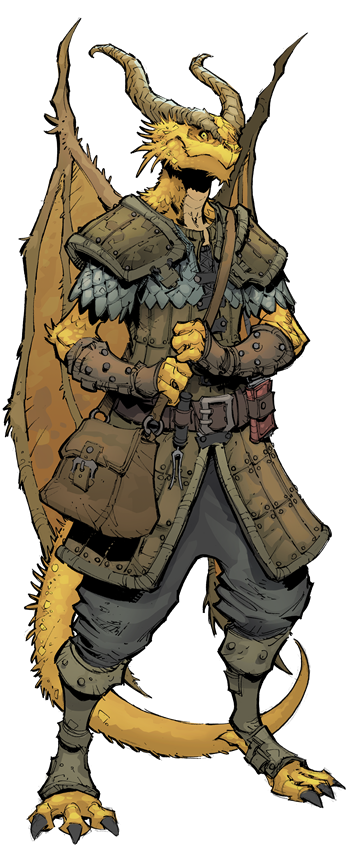 We’ve completed our second full rotation of the twelve classes in the Player’s Handbook, not to mention taken a deep dive into the first 5 levels of D&D’s thirteenth class, the inventive and arcane Artificer! This wave of the Class 101 series will appraise every subclass within the Player’s Handbook and break down each subclass’s strengths, weaknesses, thematic elements, and everything else a player would want to know before playing that subclass. Because of this, you will need to own the Player’s Handbook (or purchase the subclass a la carte on the Marketplace) in order to make full use of this series.
We’ve completed our second full rotation of the twelve classes in the Player’s Handbook, not to mention taken a deep dive into the first 5 levels of D&D’s thirteenth class, the inventive and arcane Artificer! This wave of the Class 101 series will appraise every subclass within the Player’s Handbook and break down each subclass’s strengths, weaknesses, thematic elements, and everything else a player would want to know before playing that subclass. Because of this, you will need to own the Player’s Handbook (or purchase the subclass a la carte on the Marketplace) in order to make full use of this series.
Clerics of radiant or fiery gods may find themselves drawn like moths to the Light Domain, an aspect of divinity that embodies two very different aspects of light—the soothing comfort of a sunny day, and the overwhelming pain of unrelenting radiance.
If you’re playing in the Forgotten Realms, you may wish to follow the Light Domain if you’re a cleric of Lathander the Morninglord, Helm the Vigilant One, Milil the Lord of Song, or Sune, Lady Firehair. You can learn more about these gods in chapter 1 of the Sword Coast Adventurer’s Guide.
If you’re playing in Eberron, clerics of Dol Arrah, goddess of sunlight and honor are often drawn to the Light Domain. Dol Arrah is a member of the Sovereign Host, a group of gods that are worshiped across Khorvaire. These gods aren’t discussed much in Eberron: Rising from the Last War, but you can learn more about them on the fan-made Eberron wiki.
If you’re playing in Wildemount, you may wish to follow the Light Domain if you’re a cleric of Corellon the Arch Heart, Pelor the Dawn Father, or Raei the Everlight. In Exandria, there are some demigods that can grant clerical powers of Light as well. These include Desirat the Twilight Phoenix, the Luxon, and Xalicas the Wounded. You can learn more about these gods in chapter 1 of Explorer’s Guide to Wildemount.
If you’re playing in the Greek Myth-inspired setting of Theros, your choice of god is incredibly important to all characters, not just clerics. If you want to play a cleric that wields the power of the Light Domain, consider choosing either Ephara, god of the polis, or Heliod, god of the sun, and reading their description closely. You can read these descriptions in chapter 2 of Mythic Odysseys of Theros.
Check out other articles in the Cleric 101 series, like our broad overview in Cleric 101: A Beginner’s Guide to Playing the Divine, and Cleric 101: Life Domain and Cleric 101: Knowledge Domain. If you’re interested in playing other classes, check out the entire Class 101 series.
Story of the Light Domain
"The light of Lathander guides me, beast of the night."
A half-elf cleric leaned on his staff amidst a moonless forest. A creature stood across the clearing from him, its fur singed and its monstrous chest heaving. The creature was humanoid in shape, but horrifically tall and muscular, and covered from snout to paw in gray fur. The beast had the head of a wolf, and yellow eyes that shone like candles in the darkness. The werewolf smiled, revealing rows of knife-sharp teeth.
"I thrive in the light of the moon, priest," the werewolf snarled. "You wear naught but cloth, which my claws can so easily shred, and are made of tender flesh that by jaws can pierce and rend. Your sparkles cannot kill me."
The cleric gripped his staff tightly as the lycanthrope tensed its haunches, preparing to strike. He blinked sweat out of his eyes and steeled himself. "You may thrive in the moon, monster, but I wield a power greater still. Even in the darkest night, the dawn will never abandon me!" He raised his staff and his free hand high, and a blazing orb of golden flames burst into being before him. He twisted his body as if throwing a ball and groaned in painful exertion, and hurled the sphere towards the wolf. The sphere of burning magic struck the ground and traced a circle around the monster, lighting the grass alight before it slammed into the wolf's side.
Light Domain Features
A divine domain is a suite of abilities innately tied to an aspect of a god’s divinity. A god may possess many domains within their expansive power, but a mortal being can only ever receive the powers of a single one. Clerics who receive the power of the Light Domain carry both temperance and wrath within themselves, seeking to shine light into dark places. This can be for good or for ill, for some darknesses were never meant to be dispelled. These clerics gain several features that demonstrate their worldliness, as well as their aptitude for acquiring new knowledge.
The cleric gains access to five subclass features at 1st, 2nd, 6th, 8th, and 17th level. You can read all of the Light Domain features in the Player’s Handbook. In summary, your subclass features allow you to:
- Learn the light cantrip.
- Create a Warding Flare to cause your foes’ attacks against you to falter.
- Channel your god’s divine power to dispel magical darkness and sear foes with radiant light.
- Use your Warding Flare when your allies are under attack.
- Improve the destructive power of your cantrips.
- Surround yourself with light that dispels darkness and empowers your own fiery or radiant spells.
Benefits of the Light Domain
The Light Domain is a great choice for generalist clerics. Their Domain Spells and other class features support a cleric that wants to deal damage in combat, but also protect allies. Notably, your Domain Spells feature grants you a number of combat spells that would normally be unavailable to clerics:
Being able to use fireball starting at 5th level is a huge boon for combat clerics, as it may be the most efficient damage spell in the entire game. Many of these other spells are useful too, since outside of guiding bolt, clerics have precious few powerful damage spells at low levels.
The Light Domain also presents self-defense as a core subclass feature in the form of Warding Flare—and then upgrades this feature at 6th level, allowing you to protect your allies with it as well. Most importantly, Warding Flare and its upgraded variant can be used as a reaction, and while magical, aren’t spells. This lets you use it in conjunction with spells that require an action or a bonus action to cast.
Coupled with the usual spells available to clerics, the Light Domain has a robust arsenal of features that makes them useful as both a high-damage casting powerhouse and a worthy support caster.
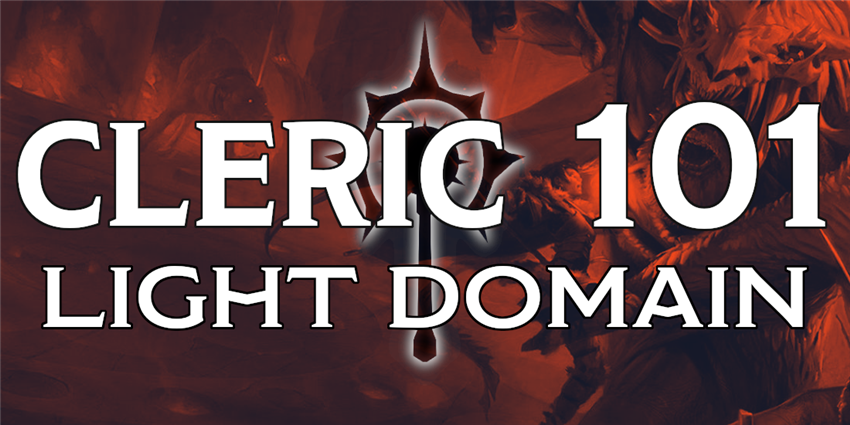
Drawbacks of the Light Domain
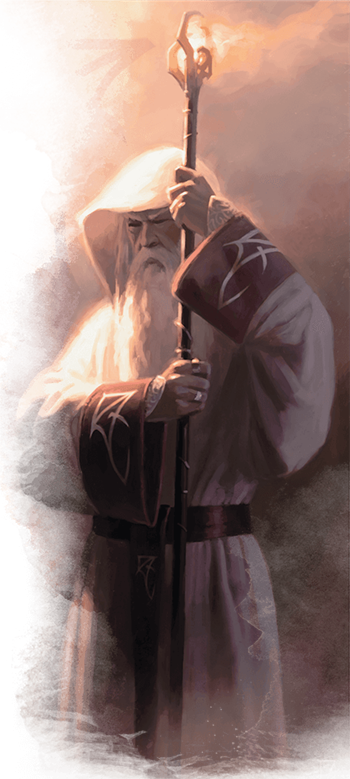 Despite being a generalist, the Light Domain’s greatest drawback is actually that their role is too narrow. Sound strange? Here’s why.
Despite being a generalist, the Light Domain’s greatest drawback is actually that their role is too narrow. Sound strange? Here’s why.
The Light Domain grants a lot of combat abilities, but it has no class features that allow them to be useful in social or exploration encounters. Of course, any player can have fun roleplaying even without mechanical support—but one needs only look at a College of Eloquence bard or even an Assassin rogue to see how class features can make them more adept at emerging victorious from non-combat encounters. If your campaign rarely features social or exploration encounters—or at least, rarely features non-combat encounters where success or failure have rewards or consequences—then this drawback may not be as meaningful to you.
However, there is one weak link in the Light Domain’s otherwise-powerful arsenal of combat spells. Despite being thematically focused around light, the subclass’s Domain Spells focus overwhelmingly on spells that deal fire damage. Not only is this an odd thematic mismatch, but fire damage is one of the most frequently resisted damage types in the game, and it’s also one of the most common damage types that monsters are completely immune to, as well!
If you’re playing in a campaign that features a lot of fiends, Light Domain clerics will quickly discover that their primary element is next to useless against their unholy foes—an odd situation for holy clerics to find themselves in. If you’re playing a home game where you’re able to create house rules, consider swapping Potent Spellcasting (the Light Domain’s 8th-level feature) for this alternative:
Flames of Celestia
Starting at 8th level, whenever you cast a spell that deals fire damage, you can deal radiant damage instead.
You can use this feature a number of times equal to your Wisdom modifier (minimum of once). You regain all expended uses when you finish a long rest.
Suggested Build
If you’re playing a Light domain cleric from 1st level, you should choose a race that gives you a bonus to your Wisdom score. Since you’re not proficient in heavy armor, you may also want to increase your Dexterity score to improve your Armor Class.
The hill dwarf race grants you a bonus to Wisdom, plus improves your Constitution and hit points, allowing you to weather hits that might incapacitate another cleric. Wood elves grant a useful bonus to both Dexterity and Wisdom. Finally, races with bonuses you can assign to any trait, such as a variant human or a half-elf, also allow you to allocate your ability score bonuses as you see fit, as well as granting extra skill proficiencies that can improve your out-of-combat abilities.
As usual, your character’s background is up to you. Many clerics come from an acolyte background, having been trained in the priestly arts since birth, but others come to faith later in life. Perhaps you were am Urchin who was saved from poverty by a kindly priest and dedicated your life to the service of their god. Or, maybe you were a Folk Hero who prayed to a god of light before every battle, and whose faith grew with every victory they won.
Selecting EQUIPMENT when creating your cleric is a good idea. Since you aren’t proficient in either heavy armor or martial weapons, you’ll want to select a mace and scale mail (if your Strength is higher than your Dexterity) or leather armor (if your Dexterity is higher). Details like what type of holy symbol you wear are aesthetic decisions, and thus entirely up to you.
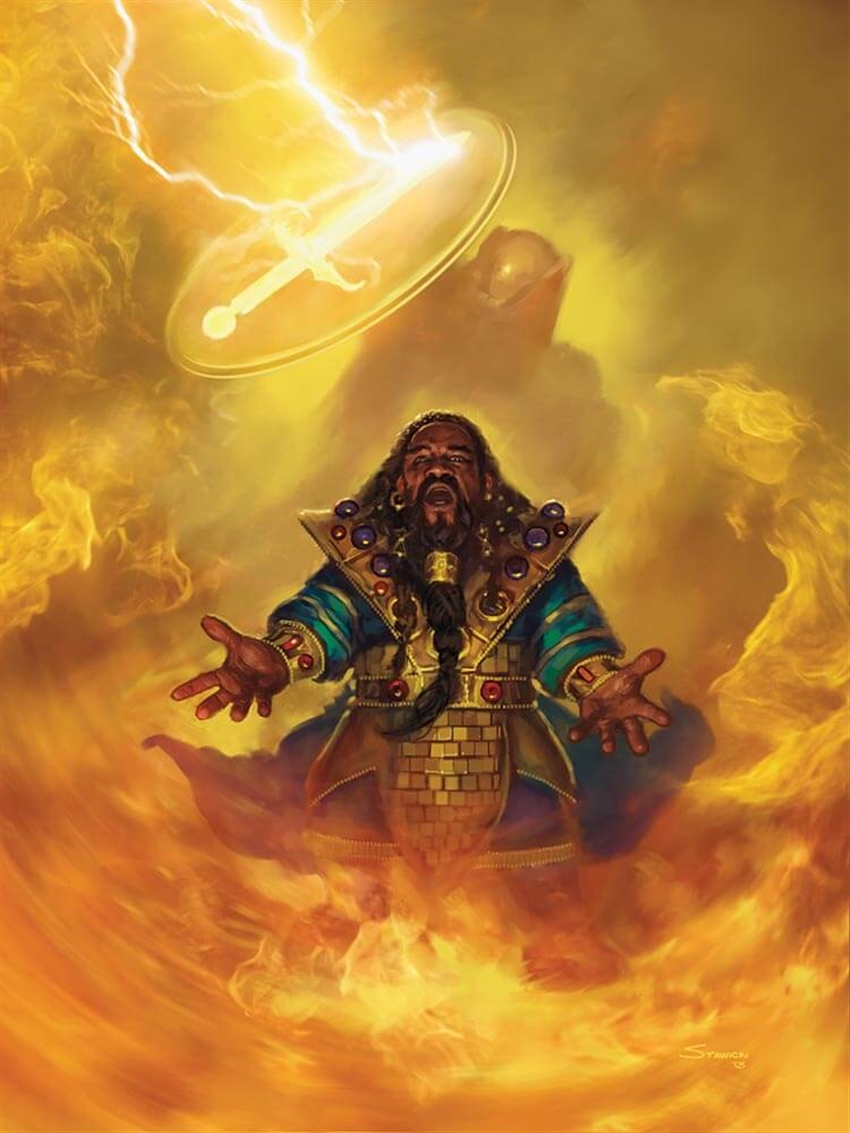
Spells
Fortunately, as a cleric, you have the entire cleric spell list available to you whenever you prepare spells at the start of the day. Nevertheless, when playing a cleric, it can help to have a typical spell list that your cleric always has prepared—unless you specifically choose otherwise. This can save you the trouble of having to re-select all your spells at the start of each day. Since your Domain Spells grant you a suite of useful combat spells, you may want to gear your spell selection towards spells that will help you in social or exploration scenarios.
As a 1st-level cleric, you know three cantrips and can prepare a number of 1st-level spells equal to 1 + your Wisdom modifier. Odds are, your Wisdom modifier will be either +2 or +3 right now, so you’ll be able to choose either three or four 1st-level spells whenever you complete a long rest. As a character that values both offense and support, the guidance and sacred flame cantrips will give you a little both that you can always rely on. Beyond this, your cantrips are simply a matter of preference, and almost any will serve you well.
You can prepare any 1st-level spells from the cleric spell list, but you can use this list of suggested spells to prepare an all-purpose spell loadout that will serve you in most circumstances. As you go on adventures and learn what dangers your character tends to face, you can personalize your spell loadout. Try to choose one spell labeled SUPPORT, one labeled DEFENSE, and one labeled OFFENSE. If you have a high Wisdom score and can prepare additional spells, choose others of your choice. Note that this list only includes some spells from the Player's Handbook, so if you want to choose more unusual spells, or have other sources like Xanathar's Guide to Everything, you'll have to do a little self-directed research. This list is just here to get you started if this is your first time playing a Light Domain cleric.
(Note that, thanks to your Domain Spells feature, you always have the burning hands and faerie fire spells prepared, and they don’t count against the number of spells you can prepare each day.)
- Bless (SUPPORT)
- Bane (DEFENSE)
- Detect magic (EXPLORATION) [this spell can be cast a ritual, which means you can cast it without expending a spell slot, if you spend an extra 10 minutes casting it]
- Guiding bolt (OFFENSE)
- Healing word (SUPPORT)
- Inflict wounds (OFFENSE)
- Protection from evil and good (DEFENSE)
- Shield of faith (DEFENSE)
Feats
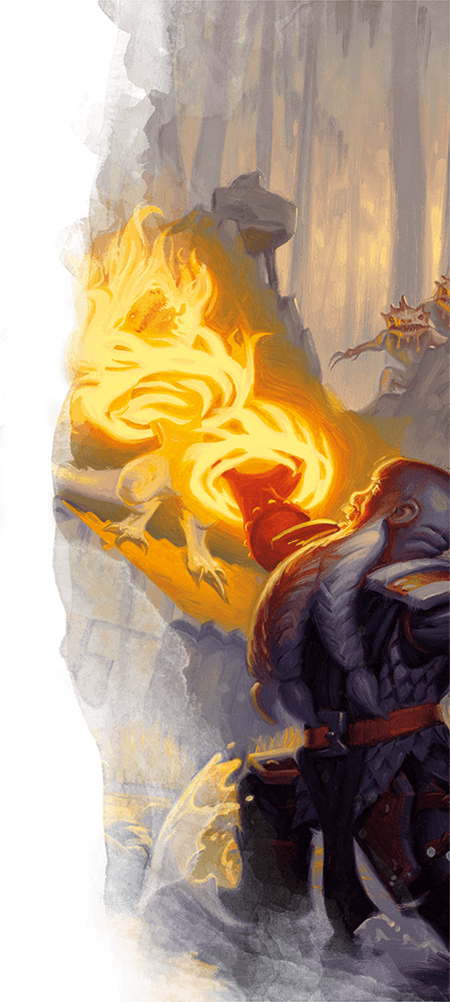 Once you’ve improved your Wisdom score to 18 or 20, you can increase your power with a few useful feats. The following feats are good picks for Light Domain clerics, and will improve your reliability in your own desired area of expertise:
Once you’ve improved your Wisdom score to 18 or 20, you can increase your power with a few useful feats. The following feats are good picks for Light Domain clerics, and will improve your reliability in your own desired area of expertise:
Elemental Adept (Fire). If you’re not playing with the house rule presented in the “Drawbacks of the Light Domain” section above, you’ll need some way to overcome fire resistance when you inevitably face foes that scoff at your fire attacks.
Healer. You may prefer to spend your spell slots on destructive magic, rather than healing spells. In that case, this feat will help you conserve low-level spell slots by healing with a healer’s kit instead of cure wounds.
Heavily Armored. If you’re more of a “fire and brimstone” sort of cleric, you may want to improve your Armor Class by stepping into a suit of heavy armor. This works best if you’ve also raised your Strength score to 15 or higher, so that you aren’t inhibited by their Strength requirement!
Lucky. This feat is always useful. It’s one of the less interesting, but more broadly useful, feats in the game. You can be the judge of whether or not that’s fun for you.
Resilient (Constitution). You have a number of powerful spells that you must concentrate on to maintain. Taking damage in combat can spoil the full effects of a useful spell, so gaining proficiency in Constitution saving throws make you a much more reliable spellcaster!
If you want more advice for building a cleric, check out Cleric 101. Have you ever played a Light Domain cleric? What advice would you give to players that want to make a character like this? Next time, Class 101 will cover the druidic Circle of Spores, an eerie servant of decay from Guildmaster's Guide to Ravnica. What's your cleric character like? Let us know in the comments!
Create A Brand-New Adventurer Acquire New Powers and Adventures Browse All Your D&D Content
 James Haeck is the lead writer for D&D Beyond, the co-author of Waterdeep: Dragon Heist, Baldur's Gate: Descent into Avernus, and the Critical Role Explorer's Guide to Wildemount, a member of the Guild Adepts, and a freelance writer for Wizards of the Coast, the D&D Adventurers League, and other RPG companies. He lives in Seattle, Washington with his fiancée Hannah and their animal companions Mei and Marzipan. You can find him wasting time on Twitter at @jamesjhaeck.
James Haeck is the lead writer for D&D Beyond, the co-author of Waterdeep: Dragon Heist, Baldur's Gate: Descent into Avernus, and the Critical Role Explorer's Guide to Wildemount, a member of the Guild Adepts, and a freelance writer for Wizards of the Coast, the D&D Adventurers League, and other RPG companies. He lives in Seattle, Washington with his fiancée Hannah and their animal companions Mei and Marzipan. You can find him wasting time on Twitter at @jamesjhaeck.








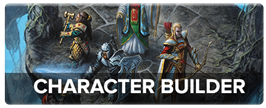
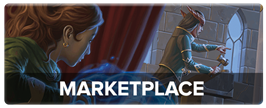
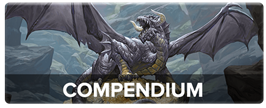
-
View User Profile
-
Send Message
Posted Aug 26, 2020Same. When I first made one, I literally had no idea what the heck to do. The idea of a hexblade warlock was REALLY confusing- I even tried looking online, but pretty much everyone else was confused by the concept too. I know about that subclass now, but it would be really nice to look at it in detail. Also, love the "Flames of Celestia" variant! Great article James!
-
View User Profile
-
Send Message
Posted Aug 26, 2020Laser Cleric
-
View User Profile
-
Send Message
Posted Aug 26, 2020Is it necessary for an errata to change the name of the "Corona of Light" capstone feature? Probably not in the long run. Will WOTC mention this? Never.
-
View User Profile
-
Send Message
Posted Aug 27, 2020I covered the Hexblade years ago in a predecessor to the Class 101 series. I'll return to the Hexblade in Class 101 eventually, of course, but please check out this precursor in the meantime!
https://www.dndbeyond.com/posts/356-heroes-of-hallows-eve-hexblade-warlock
-
View User Profile
-
Send Message
Posted Aug 27, 2020Thanks for the link, I had searched for an Article to do with the Hexblade but I couldn't find anything. Glad I found it.
-
View User Profile
-
Send Message
Posted Aug 27, 2020I don't think that the name should be changed. Corona is a real word, even if it does have negative connotations now.
-
View User Profile
-
Send Message
Posted Aug 27, 2020Just throwing out that some moon dieties also have the light domain, such as the drow goddess Eilistraee (the only good aligned drow deity). Don't know about you, but I really like the image of a cleric that burns enemies with silver-colored fire and divine moonlight.
Need an explanation for spells and features that create sunlight though, but that shouldn't be hard. Can be simply because "it's divine moonlight", or something related to how moonlight is actually sunlight that the moon reflects.
-
View User Profile
-
Send Message
Posted Aug 29, 2020There's so much wrongness here I don't know where to begin. I think the one that stands out the most is the omission of War Caster from the list of suggested feats. While it may be LESS important for a Light Cleric than many (because of the attractiveness of Fireball) you'll still want to be using a Concentration spell of some kind a lot of the time.
Then there's the part about how your class features are tuned more for combat than social interaction or exploring. Well, maybe, but you're still a damn CLERIC, with that handy "Spellcasting" feature that includes things like Zone of Truth for social and Water Walking for exploring - as just one example of each. Clerics of any domain have PLENTY they can do there already.
Finally, commenting that clerics in general have trouble doing damage... have you SEEN what a combo of Spiritual Weapon and Spirit Guardians can do? Yeah, it's damage over time which is maybe not as attractive, but at the point you have them both, 5th level, if an encounter is worth spending that many resources, it'll go on for a while. And you don't have to worry about friendly fire on Spirit Guardians 99% of the time, unlike Fireball.
About the only value I see in the article is laying out the facts, and kudos for that, but I think the analysis is more wrong or misleading (like the implication that using a spell as a reaction might interfere with other casting - it doesn't) than helpful.
-
View User Profile
-
Send Message
Posted Aug 29, 2020How do you use this domain in DnD beyond?
-
View User Profile
-
Send Message
Posted Aug 29, 2020You need to buy it.
-
View User Profile
-
Send Message
Posted Aug 30, 2020I love playing clerics. Something about being close to the divine...it always appeals to me in a fantasy setting.
-
View User Profile
-
Send Message
Posted Sep 2, 2020If I wanted to play as a Lizardfolk Cleric that uses the Light Domain, can the lizard god Semuanya work?
I know Semuanya represents the Domain Life, but could it also represent Light as well? I don't know how DND logic works but if there was no Life, then there wouldn't be Light. At least that's how I see it in my POV.
-
View User Profile
-
Send Message
Posted Sep 5, 2020Nice article, but I would change one thing: Why did you choose Resilient (Con) and not War Caster? Yes you get another point in con, but with war caster you get advantage on saving throws to keep concentration. And you can do the somatic component while holding a shield and a weapon. Plus you can cast a one target spell as an opportunity attack.
-
View User Profile
-
Send Message
Posted Sep 5, 2020These two feats tend to fill a similar niche. Since in most cases, a cleric can use their shield as a holy symbol to perform material and somatic components, the secondary trait of War Caster becomes irrelevant. Likewise, proficiency in Constitution saving throws is more broadly applicable, and eventually just as powerful, as advantage on Constitution saves to maintain concentration. You're absolutely right on the last point: ability to cast single-target spells instead of making an opportunity attack can be powerful—dropping an upcast guiding bolt on a fleeing enemy, thus granting an ally advantage on their own potential opportunity attack, is an amazing scenario. It's quite niche, however, and I wouldn't rely on it.
-
View User Profile
-
Send Message
Posted Nov 26, 2020The sun does have a corona, which is visible during total solar eclipses so the name fits. Corona is the Spanish word for crown which makes sense since the cleric will have a surrounding crown of light, just like the sun. No need to demonize a single word.
-
View User Profile
-
Send Message
Posted Dec 29, 2020I played a Light Domain Cleric to level 16 and it was way too much fun. My only nit-pick with this Domain, is that I think they should get Fire Bolt instead of Light. It did give me a opportunity to have a great one on one with my DM about how to get that Cantrip, easily enough we settled on me chosing the Boros Legionnaire background from Guildmaster's Guide to Ravnica, which was terrific--we just reflavored it to fit his campaign.
-
View User Profile
-
Send Message
Posted Jan 13, 2021I was thinking the same a Sungamer (nice name for a Light Domain Cleric, lol).
But you convinced to me to take Resilient (CON) instead. Great arguments.
-
View User Profile
-
Send Message
Posted Nov 28, 2022That's entirely up to you.
-
View User Profile
-
Send Message
Posted Mar 22, 2023Leather Armor? Unless your Dexterity is 16 or higher, you should probably still grab the Scale Mail and details about your Holy Symbol can absolutely matter if your DM is strict about enforcing Somatic and Material spell components.
Also, I'm disappointed that this article makes no mention of paying attention to whether a spell requires concentration. If you take Bless, you really shouldn't be taking Shield of Faith or Bane until you can prepare more spells. Also, Healing Word is a must have on any class with access to that spell, especially at level 1 where players go down super easily...
As for feats, no mention of Warcaster?
Terrible article.
-
View User Profile
-
Send Message
Posted Feb 6, 2025Why did you remove this class of cleric! :-(